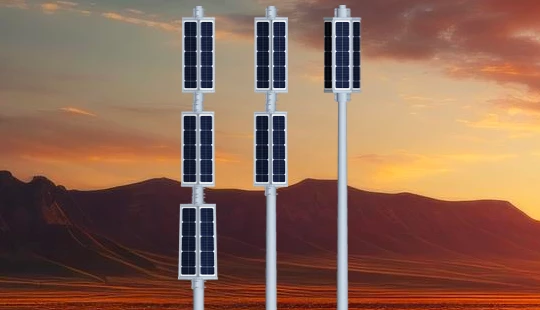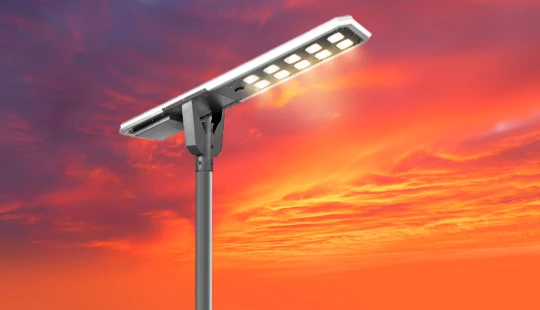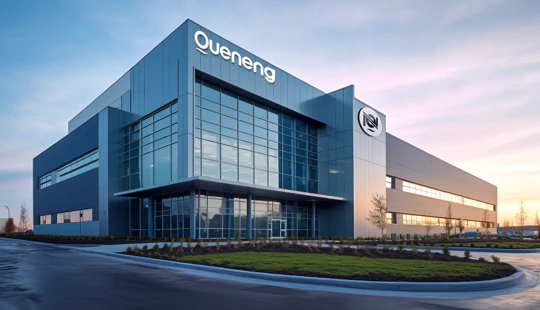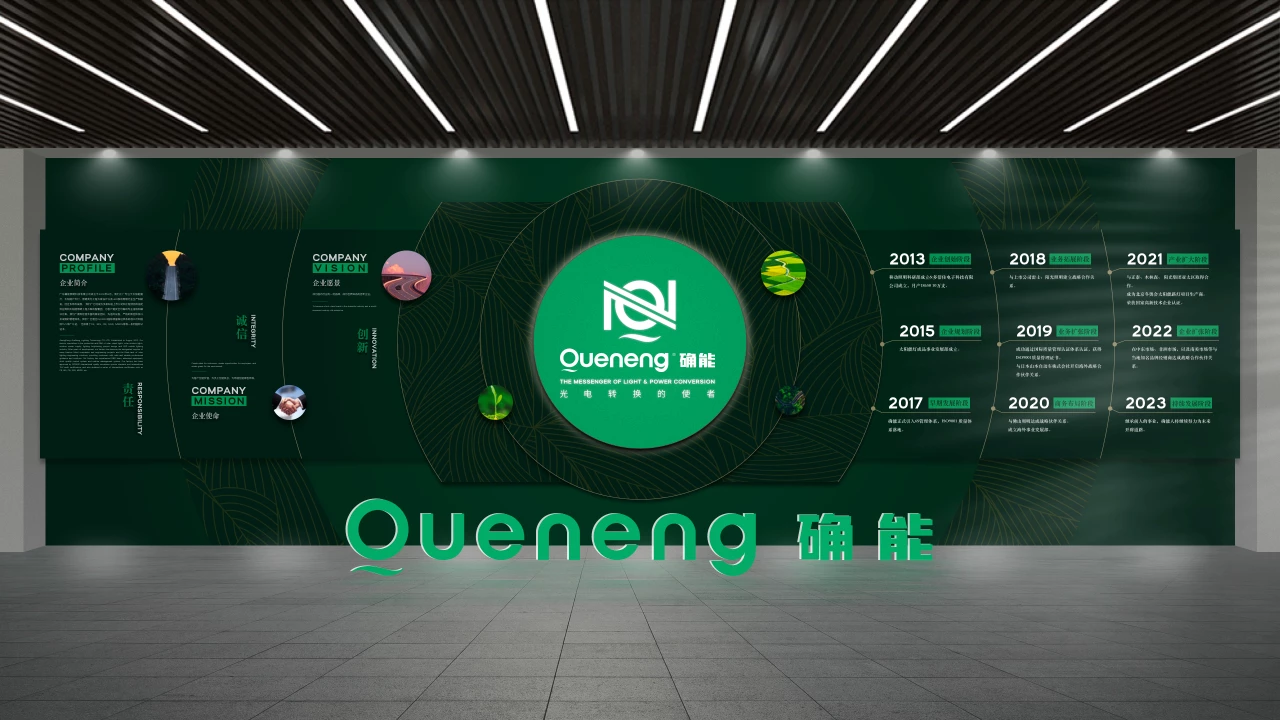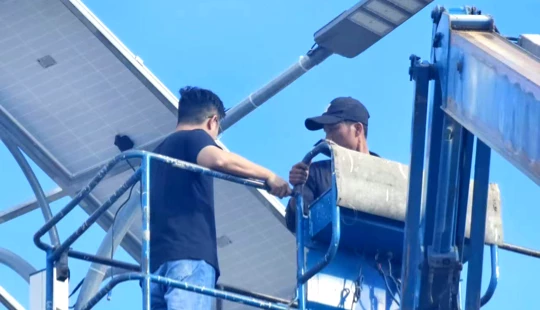why lithium battery is better for solar lights | Quenenglighting Expert Guide

Why Lithium Batteries Are the Gold Standard for Solar Lighting: A Procurement Deep Dive
As the solar lighting industry evolves, the choice of energy storage is paramount for system reliability, longevity, and overall cost-effectiveness. For procurement professionals, understanding the advancements in battery technology is crucial. Lithium-ion batteries, particularly Lithium Iron Phosphate (LiFePO4 or LFP), have emerged as the superior choice, significantly outperforming traditional lead-acid batteries in almost every measurable aspect. This guide addresses key questions to inform your next solar lighting procurement decision.
1. Why are Lithium Batteries the Preferred Choice for Modern Solar Lighting Solutions?
Lithium batteries, especially LiFePO4, offer a fundamentally better energy storage solution due to their high energy density and consistent power output. Unlike lead-acid batteries, LFPs can store more energy in a smaller, lighter package, making integrated solar fixtures more compact and aesthetically pleasing. Their stable voltage output ensures consistent illumination throughout the night, without the dimming often experienced with lead-acid batteries as their charge depletes. Furthermore, LFPs boast a high charge and discharge efficiency, typically between 95% and 99%, meaning more of the harvested solar energy is actually stored and utilized, compared to lead-acid batteries' 70-85% efficiency.
2. What Lifespan and Cycle Advantages Do Lithium Batteries Offer Over Traditional Options?
One of the most compelling reasons for adopting lithium batteries is their significantly extended lifespan and superior cycle life. A high-quality LiFePO4 battery can endure between 2,000 to 8,000 charge/discharge cycles at an 80% Depth of Discharge (DoD), translating to an operational life of 5 to 15 years, depending on usage conditions. In stark contrast, lead-acid batteries typically offer only 300 to 1,000 cycles, and their lifespan is drastically reduced if regularly discharged beyond 50% DoD. This superior cycle life means fewer battery replacements over the lifetime of a solar lighting system, leading to substantial long-term savings and reduced environmental impact.
3. How Do Lithium Batteries Perform in Extreme Temperatures Compared to Lead-Acid?
Solar lighting systems are often deployed in diverse climatic conditions, making temperature performance a critical factor. LiFePO4 batteries generally exhibit better temperature tolerance and more stable performance across a wider range than lead-acid batteries. While all batteries experience some performance degradation in extreme cold, LFP batteries maintain a higher percentage of their capacity at sub-zero temperatures compared to lead-acid. For instance, at -20°C (-4°F), an LFP battery might retain 80% of its capacity, whereas a lead-acid battery could drop to 50% or even less. They also perform reliably in higher ambient temperatures without the accelerated degradation often seen in lead-acid chemistries, offering an operating range typically from -20°C to 60°C.
4. Are Lithium Batteries Truly More Cost-Effective for Solar Lighting Projects in the Long Run?
While the upfront cost of lithium batteries is generally higher than that of lead-acid batteries, their Total Cost of Ownership (TCO) is significantly lower over the system's lifespan. The primary drivers for this long-term cost-effectiveness include their extended lifespan, which drastically reduces replacement frequency and associated labor costs. Their higher efficiency also means a smaller battery bank or even solar panel might be required to achieve the same operational autonomy, potentially offsetting some initial investment. Furthermore, reduced maintenance requirements (detailed below) and improved system reliability contribute to lower operational expenditures, making lithium batteries a more economically sound investment over time for large-scale or mission-critical solar lighting installations.
5. What Maintenance Benefits Do Lithium Batteries Provide for Solar Street Lights?
For large-scale solar lighting deployments, maintenance can be a significant operational expense. Lithium batteries are virtually maintenance-free, a substantial advantage over traditional lead-acid batteries. Flooded lead-acid batteries require regular watering to replenish electrolyte levels, and even sealed lead-acid (SLA) batteries can benefit from periodic equalization charges. Lithium batteries, however, do not require any of these interventions. Their integrated Battery Management Systems (BMS) handle cell balancing, overcharge/discharge protection, and temperature monitoring automatically, ensuring optimal performance and safety without manual intervention. This drastically reduces the labor and logistics associated with battery upkeep, making them ideal for remote or widely dispersed solar lighting assets.

Have more questions about our products or services?
The latest hot news you might like

Discover how solar panels power street lights, exploring the technology behind solar energy conversion, storage systems, and how solar-powered street lights are revolutionizing urban and rural lighting solutions.

Learn how AC Solar Hybrid Street Lights work, their advantages, disadvantages, system behavior in low-sunlight conditions, and why hybrid technology is ideal for regions with unstable sunlight.

Municipalities around the world are increasingly adopting solar-powered streetlights as part of their urban development strategies. Rising energy costs, the need for sustainable infrastructure, and government green initiatives are driving cities to switch from traditional street lighting to advanced LED solar streetlights.
Queneng Lighting provides municipalities with cost-effective, energy-efficient, and durable solar lighting solutions, ensuring safe and sustainable public spaces.
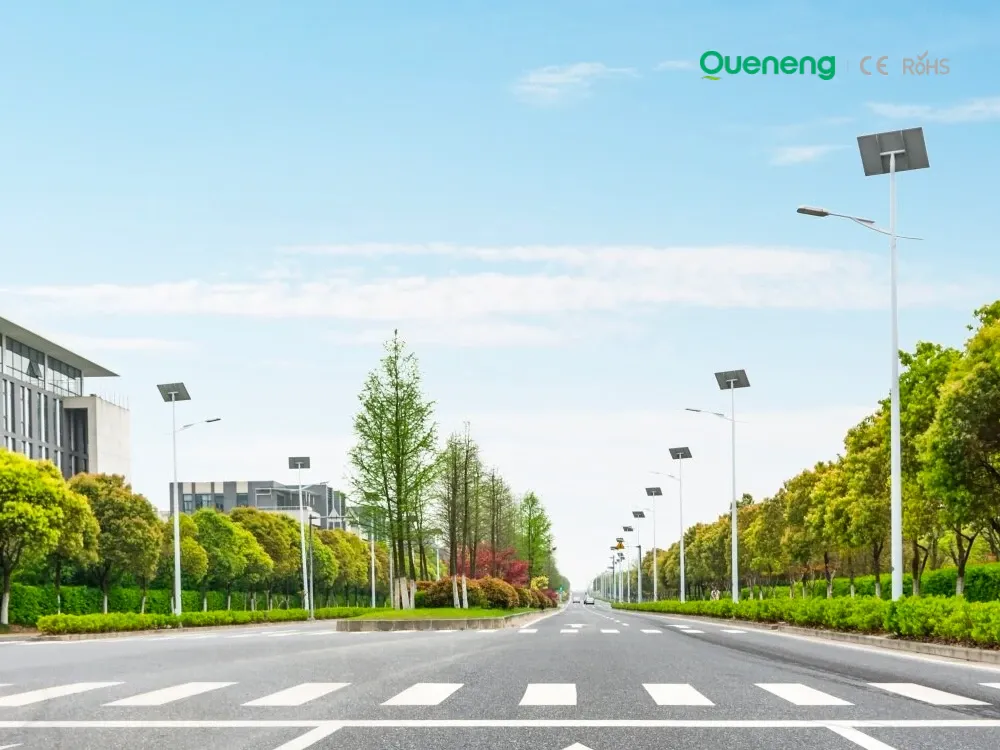
In recent years, the purchase of solar streetlights for municipalities has become a growing trend across the globe. Local governments are under pressure to reduce public expenditure, promote green energy, and create safer communities. Solar streetlights provide a reliable, cost-effective, and sustainable solution that meets these needs. Queneng Lighting, as a leading solar street lighting manufacturer, has supported multiple municipal projects worldwide with customized and energy-efficient solutions.
FAQ
Solar Street Light Lufeng
Are Lufeng solar street lights compatible with different outdoor environments?
Yes, Lufeng solar street lights are highly versatile and can be used in a variety of outdoor environments. They are perfect for urban streets, residential areas, rural roads, parks, and recreational spaces. Their durable design ensures they can function reliably in diverse weather conditions and geographical locations.
What makes Lufeng solar street lights eco-friendly?
Lufeng solar street lights are eco-friendly because they use renewable solar energy to power the LEDs, eliminating the need for electricity from the grid. This reduces carbon emissions and dependence on fossil fuels, contributing to a greener, more sustainable environment.
who we are
What sets Queneng apart from other solar lighting companies?
Our strong focus on innovation, quality, and customer satisfaction sets us apart. We have over a decade of experience in the solar industry and are committed to delivering high-quality, energy-efficient solutions that meet international standards. Our products are designed for durability, and our customer service ensures reliable support at every stage.
Solar Street Light Luzhou
Can Luzhou solar street lights be used in remote locations?
Yes, Luzhou solar street lights are perfect for remote locations that do not have access to the electrical grid. Their solar-powered design allows them to operate independently, making them an ideal solution for rural roads, parks, and off-grid areas.
Remote Areas Rural Development
Can the system operate in areas with limited sunlight?
Yes, advanced batteries store sufficient energy to function during cloudy days or extended low-sunlight periods.
Battery Types and Applications
What is a photovoltaic cell?


Queneng's Luzhou Solar Street Light provides sustainable, energy-efficient outdoor LED lighting. Powered by solar energy, it's a cost-effective and eco-friendly solution for illuminating streets and pathways. A reliable and durable LED solar street light.

Queneng’s Solar Street Lights are designed to provide reliable, energy-efficient lighting for streets, parks, and other outdoor spaces.

Experience reliable outdoor illumination with our smart solar street light, a perfect combination of advanced technology and eco-conscious design.

Queneng's Luqiu Innovative Solar Street Light offers energy-saving, durable outdoor lighting. This solar power street light provides a reliable and eco-friendly solution for illuminating your streets and pathways.

Queneng's Luxian Reliable Solar Street Light offers energy-saving LED lighting for outdoor use. This durable, solar-powered street light provides reliable illumination, reducing energy costs and environmental impact. A perfect solution for sustainable outdoor lighting.
If you would like more information about Queneng solar lighting solutions, please send us a message by filling out the form below. Our professional team will get back to you within 24 hours!
Rest assured that your privacy is important to us, and all information provided will be handled with the utmost confidentiality.
Schedule a Meeting

Book a date and time that is convenient for you and conduct the session in advance.
Have more questions about our products or services?

